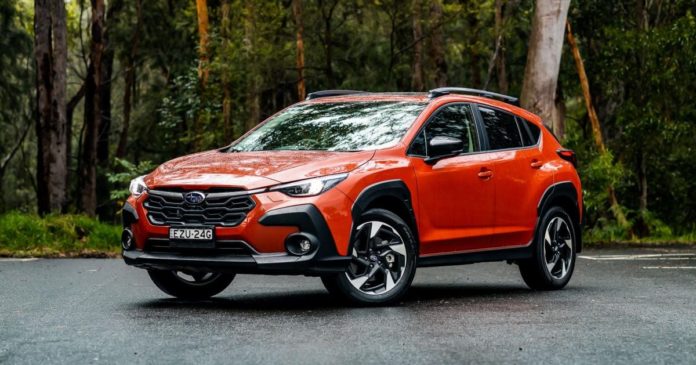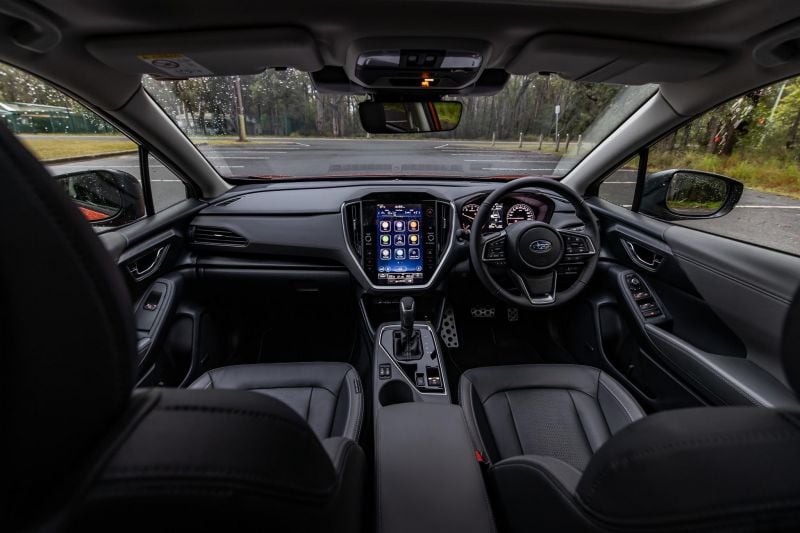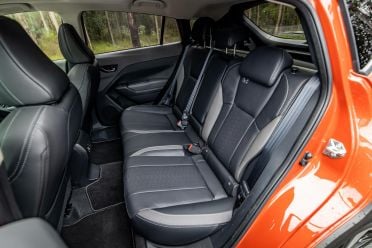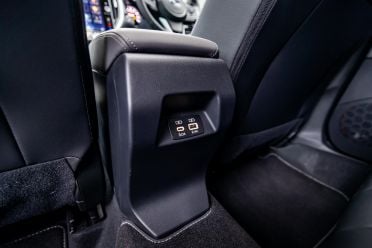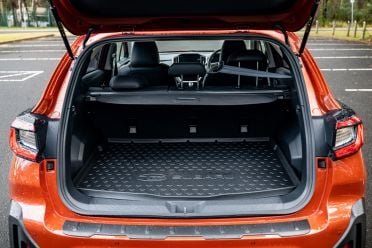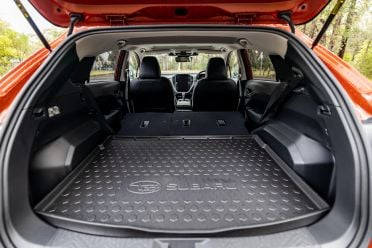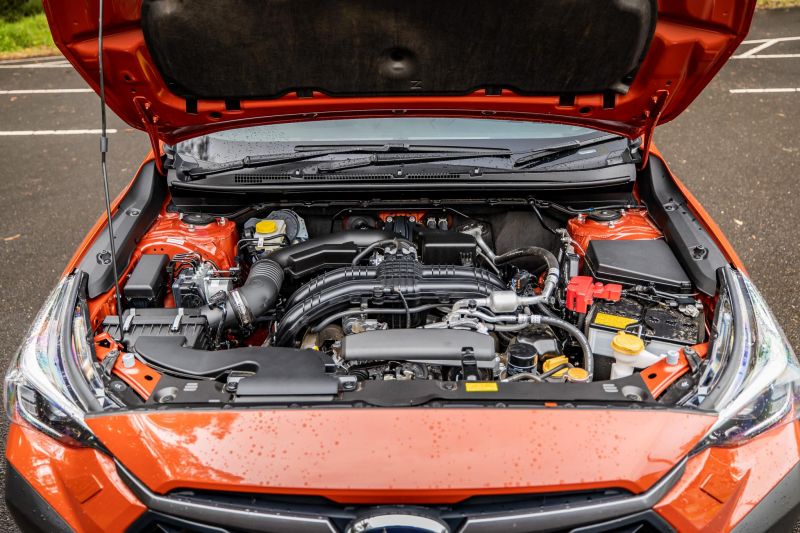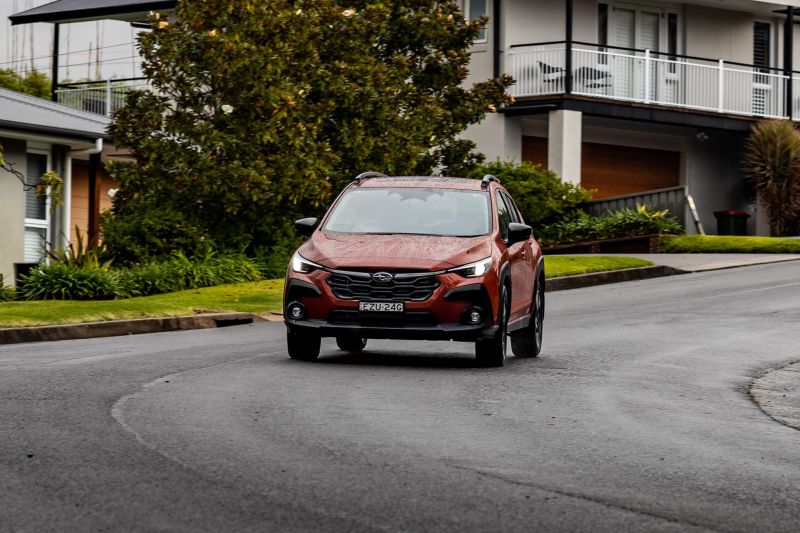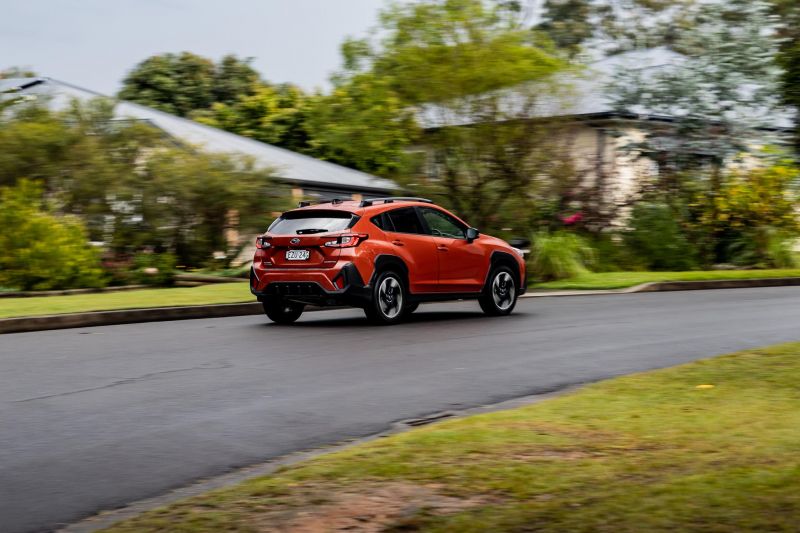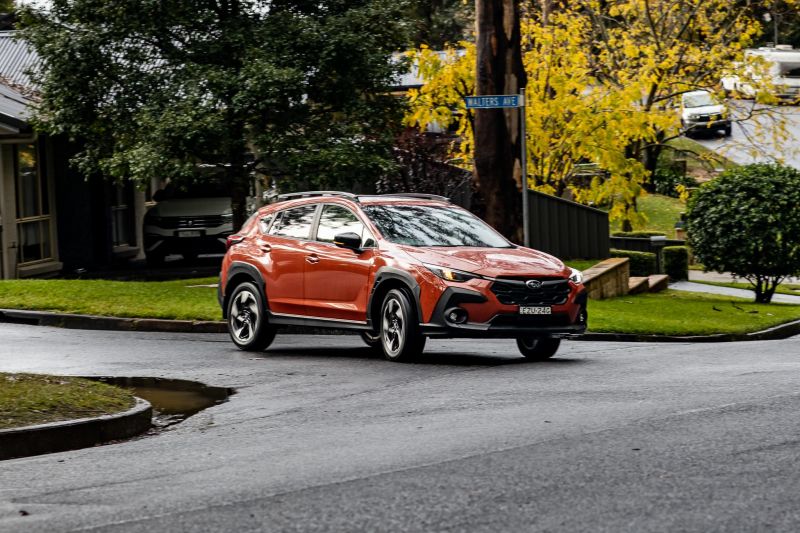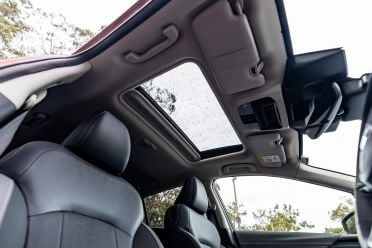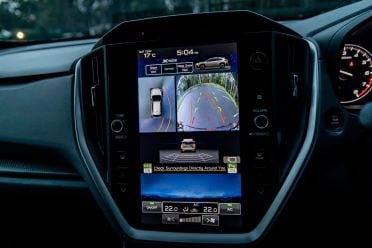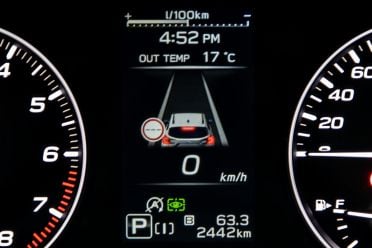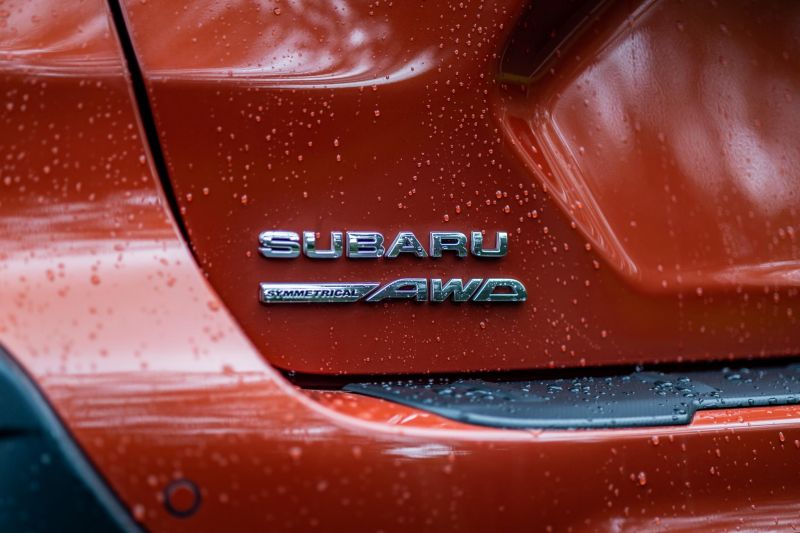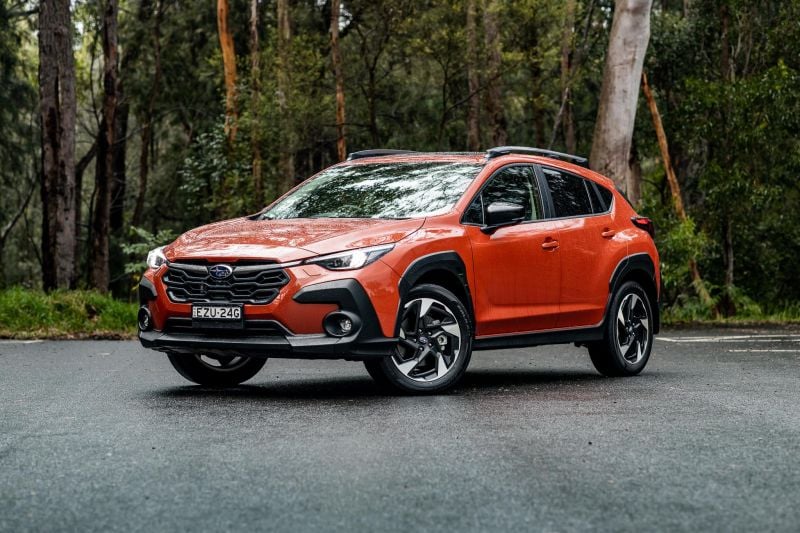The Subaru Crosstrek is a very popular compact SUV that offers a point of difference over like-priced rivals…
It’s only available in all-wheel drive – and if that matters to you, the Subaru’s system is better and offers more capability than any of the other vehicles in the small SUV class.
But if you’re not heading off to the campground, or being adventurous down near the beach, is the Crosstrek still a good car to live with?
I just spent a week in the top-spec petrol model to tell you what it’s like.
How does the Subaru Crosstrek compare?
View a detailed breakdown of the Subaru Crosstrek against similarly sized vehicles.

Subaru
Crosstrek
How much does the Subaru Crosstrek cost?
The small SUV segment is aggressive, with more than 20 players in the mix.
But Subaru has done a good job in carving its own spot in the segment, and for the first four months of 2024, it has managed to rank as the fifth-most popular vehicle in its class.
Part of that must come down to the fact that all Crosstrek models are all-wheel drive, while rivals tend to only offer AWD in the top-spec variants, at a premium.
2024 Subaru Crosstrek pricing:
| Model Variant | $RRP |
|---|---|
| 2024 Subaru Crosstrek AWD 2.0L | $34,990 |
| 2024 Subaru Crosstrek AWD 2.0X Special Edition | $36,990 |
| 2024 Subaru Crosstrek AWD 2.0R | $38,490 |
| 2024 Subaru Crosstrek AWD Hybrid L | $38,590 |
| 2024 Subaru Crosstrek AWD 2.0S | $41,490 |
| 2024 Subaru Crosstrek AWD Hybrid S | $45,090 |
Prices exclude on-road costs
To see how the Subaru Crosstrek lines up against the competition, check out our comparison tool.
What is the Subaru Crosstrek like on the inside?
There haven’t been any big changes since the Crosstrek launched, and even when it did it felt familiar to anyone who had sat in or looked at a Subaru before.
In my opinion, there’s nothing wrong with that, because the dashboard design, that big colourful media screen, and most of the controls are all easy to learn and operate.
There are some exceptions to that, however. While many of the controls are right there on the bright, crisp and colourful screen, there are still some hard buttons for your temperature adjustment and demister, as well as volume and tuning dials, which I like to see.
Annoyingly, the fan controller is at the bottom of the screen, and you need to press the screen a few times to operate the recivulated A/C, too.
But the 11.6-inch portrait-style touchscreen media system is a relatively simple thing to get your head around – at least, from my perspective it is.
Maybe it’s because this screen is reminiscent of the menu layout on an iPhone, with bright and colourful icons that I found it easy to learn. I’ve spoken to some Android aficionados that don’t dig it quite as much.
Now, the system itself features wireless Apple CarPlay and Android Auto, satellite navigation for those who like to keep it old-school, DAB digital radio, and AM/FM tuning too – with a dial for tuning and volume. Rejoice!
Further, there are USB-A, USB-C, and AUX ports, as well as a wireless phone charger in this spec. I found it was a bit grippier than some other cars, and my phone didn’t go flying through corners.
I also like the fact there are dedicated heated seat buttons for the top two grades down near the shifter, and there’s a 12-volt port and decent cup holders between the front seats, not to mention bottle holders in the doors and a centre console bin as well.
The Crosstrek’s vibe is a bit more rugged than some other SUVs in the class, and I like the grey and black trim finishes that make it feel somehow a bit more outdoorsy than rivals that seemingly think black trim is the only option.
The leather-accented seats in this top-spec model are comfortable, nicely adjustable and feel pretty fancy. Also in that column is the fact the 2.0S comes standard with a sunroof – albeit a small one by current standards.
Perhaps one way that it feels a bit more conservative than rivals is the fact it still has traditional dials in the instrument, rather than a predominantly digital display like so many rivals offer nowadays.
There’s a digital part to the cluster, which includes a speedo readout and trip computer, but it’s maybe just a bit less exciting than some competitors if you’re a tech fiend.
Another thing that might be a bit overwhelming to some people is the amount of buttons on the steering wheel, but I’ve always liked the fact you have so many controls at your fingertips when you’re driving, and there’s a button for almost anything you’d want, right there.
Okay, so what about cabin usability for a family?
It’s not the roomiest small SUV in the segment, but positioned in the back with the driver’s seat set for my position (at 182cm/6’0 tall), there was just enough knee room, foot room, and a little bit of head room for me to slot in reasonably comfortably.
Watch your head if you’re taller when getting in and out, as the apertures are a little small; and also, there is a transmission tunnel intruding into the foot space so three-across might be too squishy.
The actual seat comfort is a bit lacking, so longer trips might be a task, but also – and something that might be a deal-breaker if you’re a parent – there are no directional air vents in the back of this SUV.
But if you’re okay with that, there are ISOFIX points for the window seats and three top-tethers, as well as USB-A and USB-C ports, a map pocket, bottle holders in the doors, and there is a flip-down armrest with shallow cupholders.
Boot space will be another potential deal breaker for young families in particular, I would suggest, as there’s just 291 litres of cargo capacity, and that means you’re limited to a pram and some smaller bags, where others in the class have much more usable boot spaces.
At least you get a space-saver spare wheel under the boot floor, and a light in the back as well, shopping bag hooks and a cargo load protector with cute little wilderness easter eggs. If you want a more practical family-ready SUV, the Forester will tick that box!
What’s under the bonnet?
The Crosstrek has a hybrid option, but it’s not going to be a fuel-sipper like a Toyota Yaris Cross.
For that reason, it’s hard to recommend it, since it only uses about half a litre less per 100km, and the standard Crosstrek has a decent engine under the bonnet.
It’s a non-turbo 2.0-litre horizontally-opposed four-cylinder ‘Boxer’ petrol engine producing 115kW of power (6000rpm) and 196Nm of torque (4000rpm). The engine is paired with a continuously variable transmission (CVT) auto featuring eight simulated shift points, and Subaru’s symmetrical all-wheel drive is standard.
The official combined cycle fuel consumption figure is 7.2L/100km for the petrol versions of the Crosstrek, with an idle start/stop system that cuts the engine in traffic. During my time with the Crosstrek 2.0S, I saw a real-world return across a mix of urban, highway and freeway driving of 8.1 litres per 100km.
What’s good about the Crosstrek is that it has a large-for-the-segment 63-litre fuel tank, offering potentially decent driving range between fills. Also, it can run on 91 RON regular unleaded fuel.
How does the Subaru Crosstrek drive?
I wanted to see what the Crosstrek was like to live with on the daily – doing the stuff that you’d likely also do if you owned one of these.
Urban runs to the shops, daily errands like daycare drop-offs, and a longer commute to the city, too – for the most part, it did all of that stuff pretty well.
But it’s not all that fun, and that could be the thing that makes you think twice about it.
The thing that’s the least fun about it is the engine and transmission combo, which is lethargic feeling in start-stop traffic in particular, especially when the car is in “Intelligent” drive mode, which is more about efficiency than power.
Put it into “Sport” and it certainly feels perkier and revs harder, but that also means you hear that engine/CVT combo making more of a racket more of the time.
Suffice to say, it’s not a joyful daily driving experience from a powertrain perspective. There are other SUVs in this segment with far more fun and punchier engines teamed with smarter and smoother transmissions.
It feels a little lacking in terms of performance and polish, but honestly, if you’re not a leadfoot or you aren’t always in a hurry to get where you’re going, you might find the responsiveness and usability of the powertrain is perfectly fine.
Lots of Subarus are sold in country areas and regional zones, and for those buyers who are planning to use their car for a longer drive to get the kids to school or get themselves to work, the Crosstrek might be a better fit than for those who live in urban areas and spend a lot of time in traffic.
I found the long-distance drives I did to be the most likeable ones, as the adaptive cruise control does a decent job of harnessing the lack of torque, and the driver assistance features aren’t so annoying as to make you want to switch everything off for the duration of the trip.
But the most impressive thing about the Crosstrek across a mix of scenarios is the ride comfort, which is far more impressive than the lower-riding Impreza hatch it shares a platform with.
Indeed, the higher ride height and increased ground clearance of the crossover model makes it a pretty likeable thing in urban settings, over bumpy and lumpy roads; and yes, if you encounter gravel or unsealed sections, it has a really good handle on the surface.
That ride comfort, combined with the all-wheel drive surefootedness you’ll appreciate whether the road is rough or the weather is bad; and predictable steering with a nice amount of weight to it; means the chassis is somewhat at odds with the powertrain in this car.
If only Subaru put a more powerful engine in it!
What do you get?
Context is everything, so here’s a rundown of the standard specifications across the Crosstrek range for you to decide which variant might be best for your wants and needs:
Crosstrek 2.0L + Hybrid L standard spec highlights:
- Auto Stop Start
- Subaru Intelligent Drive (SI-Drive)
- X-Mode with hill descent control
- 17-inch alloy wheels
- LED headlights
- Dusk-sensing headlights
- Rear combination lights incl. LED brake lights
- Power-folding mirrors with indicators
- Black roof rails
- Tricot (Tetra Embossing) cloth seat trim
- Dual-zone climate-control air-conditioning
- 11.6-inch touchscreen
- Wireless Apple CarPlay and Android Auto
- USB ports – USB-A and USB-C
- Wireless Qi charger
- 6-speaker audio system
Crosstrek 2.0R adds:
- 18-inch alloy wheels
- Two-mode X-Mode
- Front and rear wipers with front de-icer
- Self-levelling LED headlights with auto off
- Front cornering lamps
- Door mirrors – heated
- Steering Responsive Headlights (SRH)
- Front LED fog lights
- Roof rails – dark grey
- Premium cloth seat trim
- Leather steering wheel/gear shift
- Sports pedals
- Auto-dimming rear view mirror
- Heated seats – driver and front passenger
- 10-way power seat with lumbar support – driver
- Rear USB-A, USB-C charging ports
- Front View Monitor
- High-beam assist
- 360-degree camera
- Side View Monitor
Crosstrek 2.0S and Hybrid S add:
- Electric sunroof
- Leather-accented seat trim
- Satellite navigation
- 10-speaker Harman Kardon audio incl. amplifier
Is the Subaru Crosstrek safe?
The Subaru Crosstrek is yet to be tested by ANCAP, and is therefore unrated.
Standard safety features include:
- 9 airbags
- Dual front, dual front side, dual curtain
- Driver’s knee
- Far side
- Front passenger seat cushion
- EyeSight Driver Assist:
- Front Pre-Collision Braking (AEB)
- Adaptive cruise control
- Lane keep assist
- Lane centring assist
- Lane departure prevention
- Lane departure warning
- Lane Sway Warning
- Lead Vehicle Start Alert
- Pre-Collision Braking System (AEB)
- Pre-Collision Throttle Management
- Autonomous emergency steering
- Brake light recognition
- Intelligent speed limiter
- Speed limiter
- Speed sign recognition
- Wide-angle monocular camera
- New stereo camera with improved image recognition
- Subaru Vision Assist:
- Blind-spot monitoring
- EyeSight Assist Monitor
- Lane change assist
- Rear cross-traffic alert
- Rear parking sensors
- Reverse Automatic Braking (AEB)
- Front side radar
- Driver Monitoring System – Driver Focus:
- Distraction warning
- Drowsiness warning
- Facial recognition
- Climate control setting (last used)
- MID display (last used)
Crosstrek 2.0R adds:
- Subaru Vision Assist:
- High-beam assist
- 360-degree cameras
- Side View Monitor
Considering the entire Subaru range wears five-star ANCAP and Euro NCAP safety ratings, we’d be surprised if the new Crosstrek didn’t achieve similar, given the common vehicle architecture and suite of standard safety systems.
How much does the Subaru Crosstrek cost to run?
Subaru backs the Crosstrek with a five-year, unlimited-kilometre warranty.
Capped-price servicing is available for the first five years/75,000 kilometres with intervals of 12 months or 15,000km.
However, the first five services are pricey. The rates are capped at $346.25, $473.47, $420.60, $771.74 and $361.13 respectively, so an average of about $475 per year – or roughly twice what it costs to service a Corolla Cross.
You get one year of roadside assistance included, too.
CarExpert’s Take on the Subaru Crosstrek
There’s no denying that for many buyers, the Crosstrek will be a perfect fit for their lifestyle and budget.
It’s not the most thrilling small SUV to drive, and the boot and back seat could be too compromised for a growing family; but for couples, empty nesters and adventurers, it might just be the right thing.
Click the images for the full gallery
MORE: Buy a Subaru Crosstrek
MORE: Everything Subaru Crosstrek

